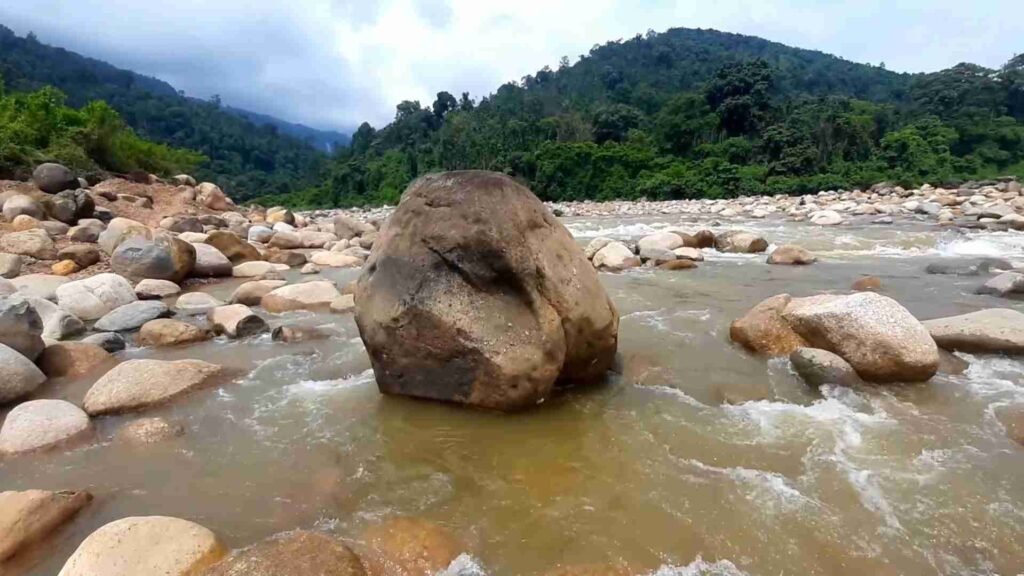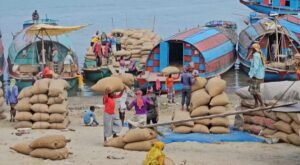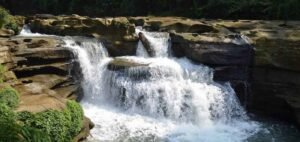Ashuganj’s Century-Old Rice Market Home / BOC Ghat sits about...
Read MoreRangpani Sylhet Travel Guide : A Hidden Paradise You Must Explore
Standing in the no man’s land, one can see India’s Meghalaya state on one side and Sylhet’s Jaintapur Upazila on the other.
Rangpani Sylhet Travel Guide : A Hidden Paradise You Must Explore
Winding rivers, forested hills, and trails lined with rolling hills — along with endless stretches of lush green tea gardens — make Sylhet’s natural beauty truly enchanting.
Tourists are captivated by the charm of waterfalls and white stones. Standing in the no man’s land, one can see India’s Meghalaya state on one side and Sylhet’s Jaintapur Upazila on the other.
In Jaintapur’s Sripur lies a hidden natural gem — the Rangpani River — which often goes unnoticed.

Introduction to Rangpani
Rangpani is a border river located in the Sripur area. The source of its crystal-clear water is the Ranhongkong waterfall in the Jaintia Hills of Meghalaya. The place is also known to many as Sripur Stone Quarry.
Due to government-declared stone quarrying, Sripur once began to lose its natural charm, leading to a decline in tourist visits. As a result, Rangpani has become unfamiliar to many in this generation.
However, descending through a narrow hilly path reveals the stunning beauty of Kashful (white grass) blooming on both sides.
In the distance lies the range of Khasi-Jaintia Hills, standing like border guards between the two countries. These hills of Meghalaya are rich in sand and stones.
The flow from upstream has deposited sand and stones downstream, forming the Sripur Stone Quarry.
During the monsoon, it’s the Rangpani River; in the dry season, it becomes a stone quarry — the same place, two contrasting faces depending on the season.
Rangpani Sylhet Distance
Rangpani is located about 54 kilometers from Sylhet city. You can reach there by private vehicle or by taking a bus heading to Jaflong.
After passing the Jaintapur Sripur tourist spot, you’ll need to get off at the Mokampunji area. From there, a short walk of about half a kilometer through the village will lead you to the Rangpani River.
According to locals, this hidden gem holds great potential as a new tourist destination.
Rangpani Stone Quarry

Sudden mountain floods carry sand and stones through the Rangpani River. With the Shillong Plateau rising in the north and the Surma Basin lying to the south, this stone quarry is nestled right in between.
Rangpani is one of the best places to experience the diverse landscape of Jaintapur.
Trucks from different parts of the country come here to collect stones. These stones are essential for construction projects like roads, bridges, and river embankments.
Diesel-powered water pumps are used to remove excess water from the quarry. Workers collect four types of stones by clearing soil and water: boulders, singles, halves, and quarters.
The quarry operates under the supervision of a leaseholder, licensed by the District Council, and work continues from morning until evening.
The Beauty of Rangapani Tourist Spot
Right beside the Rangpani River lies the Khasi village of Mokampunji. The Khasi people refer to their village as a “punji.” They have been living by the river and hills since ancient times.
A nameplate reads, “Mokampunji Khasi Indigenous People — Our Profession is Betel Nut and Betel Leaf Farming.” A warning on a mural states: “Entry or stay of outsiders in the village is prohibited after 8 PM.”
As we entered the village, we found the environment matched the writing. Every courtyard was lined with rows of betel nut trees, their trunks wrapped in vines of betel leaf climbing toward the sky.
The trees were adorned with betel leaves of various sizes. Entering from one end of the village and exiting through the other, we were left in awe of the beauty before us.
On one side of the vast water body lies another Bichanakandi, another stretch of white stones! As we moved forward, several locals warned us not to take photos.
They claimed that if we took and shared pictures, it could hurt their stone-selling business.
After crossing water that at times reached our waists and even our chests, we finally discovered ourselves in the realm of Rangpani.
Torrents of water rushed down from the Meghalaya hills in the form of waterfalls, carrying stones with them. Locals were busy collecting the stones and loading them onto boats.
This picture-perfect riverside and the surrounding Punji area were used as shooting locations for several Dhallywood films during the 1980s and 90s. The first film of the famous Shabnaz-Naem duo was also shot here.
Where to Stay – Where to Eat?
If you have a good budget, staying in Sylhet city is the best option. For budget-friendly accommodations, Jaintapur Bazar and Daroga Road offer reasonably priced places to stay.
You can also arrange to stay inside Mokampunji village of Rangpani with the help of local guides, in exchange for a fee.
To enjoy local flavors, the best options are the small restaurants and hotels in Jaintapur or Mokampunji.
Bangladesh Army in the era of Bangladesh 2.0
Bangladesh Army in the era of Bangladesh 2.0 Home /...
Read MoreNafakhum Waterfall: Hidden Water Mystery
Nafakhum Waterfall: Hidden Water Mystery Home / The Chittagong Hill...
Read MoreGovernment Promotes China Investment In Bangladesh 2.0
Home / Government Promotes China Investment In Bangladesh 2.0 ...
Read More


